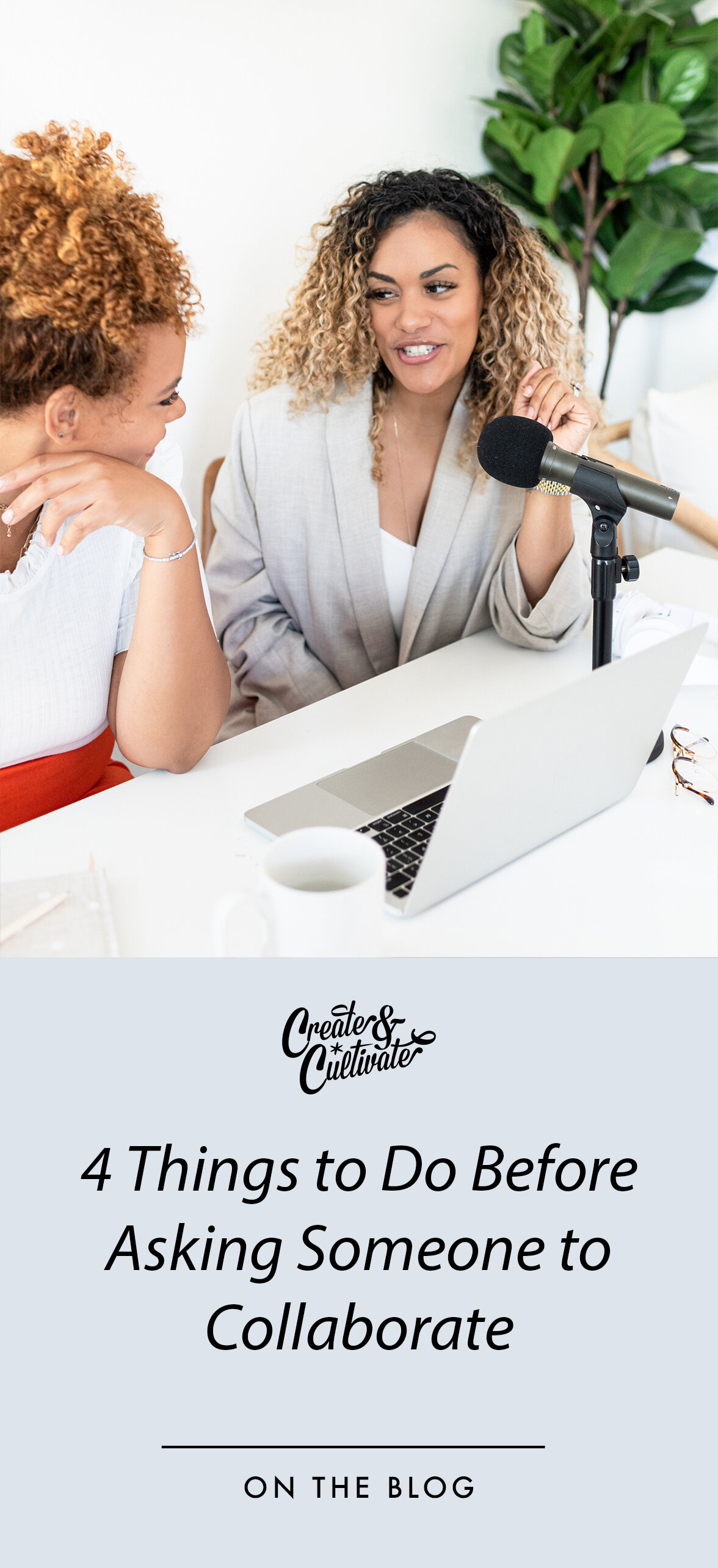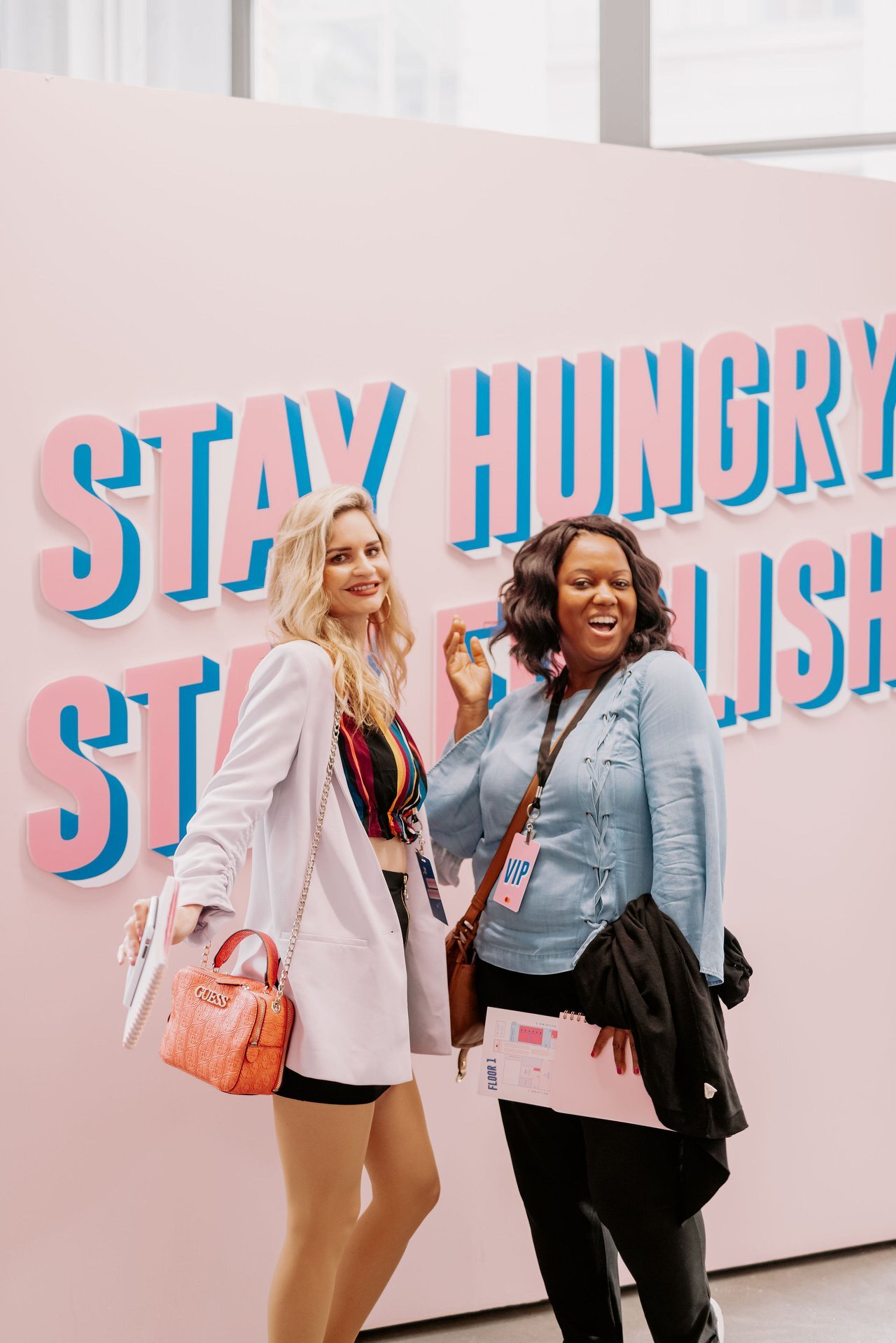Photo: Color Joy Stock
Everywhere you look, it seems like brands are partnering up to run a giveaway, go live on Instagram, or launch a co-branded product collaboration. It makes sense then, that more and more people would be curious about whether or not their business should join the collaboration party, too.
The short answer is YES, you should definitely collaborate. When we come together to share our resources, ideas, and communities with one another, we are so much more powerful than when we do things on our own.
The long answer is, although collaboration can be an incredible strategy to achieve your business goals (especially during the current climate of social distancing), you can totally miss the mark if you don’t lay the groundwork properly first. Before you take a dip in the collaboration pool, there are a few steps to take so you don’t accidentally do a belly flop:
Know your company inside and out
Identify your “Asks & Gives”
Look for the overlap
Get a warm introduction
Here’s how to do it right.
1. KNOW YOUR COMPANY INSIDE AND OUT
This includes knowing your mission (why you do what you do), vibe (how you communicate what you do), audience (who you do it for), offering (what you do), and execution (how you do what you do). Having that information top of mind will make you sound like the ultimate polished business owner, plus it’ll help you identify great potential partners down the line.
It’s also important to have a super-tight elevator pitch that explains who you are, what you do, for whom you do it, and how you do it. For example, mine is, “I’m a collaboration consultant who teaches individuals, entrepreneurs, and organizations to solve problems and achieve their goals by thinking collaboratively and harnessing the power of their network.”
“It’s important to have a super-tight elevator pitch that explains who you are, what you do, for whom you do it, and how you do it.”
Having a clear and concise elevator pitch not only makes it easier for you to explain what you do, it makes it easier for other people to explain what you do when you’re not around (and THAT is how you get great referrals.)
It’s totally fine if you continue to tweak it regularly, in fact, it’s encouraged. My elevator pitch has changed nearly a million times over the last few years, so don’t get too hung up on making it something that will last forever. The most important thing is to make sure it remains true to what your business is today, not six months ago.
2. IDENTIFY YOUR ASKS & GIVES
One of the biggest mistakes I see people make when they begin collaborating is not taking time to figure out what they need to get from a partner in order for the collaboration to feel like a success. If you haven’t identified your “asks” (what you'd like to get from a collaboration), you’re much more likely to take whatever the other party offers you, which may or may not be valuable to you or support your goals. The last thing you want to do is not express your needs, and ultimately feel taken advantage of.
“The last thing you want to do is not express your needs, and ultimately feel taken advantage of.”
Another big mistake is when people aren’t clear about what all they have to offer a partner before entering into a collaboration. Thinking through your “gives” (what you can give in a collaboration) helps you identify all the ways in which you can create an even value exchange between you and your potential partner.
There are four main “asks” and “gives:”
Promotion for your/their offering to the other’s community
Content for your/their channels
Hookups for your/their community
Barters for your/their business
The key to creating a collaboration that won’t make either side feel taken advantage of (a big fear I hear from people who are hesitant to collaborate) is to always aim for an even value exchange. What feels beneficial to one person might not matter at all to another, so it’s important to have an honest conversation at the beginning of the relationship to find out what each side values. That way you can ensure that each partner is getting what they need in order for the collaboration to feel like a success.
3. LOOK FOR THE OVERLAP
Much like romantic relationships, not every brand is going to be the right collaborative partner for you. One of the best ways to know whether a potential partner is the right fit is to make sure you share a similar mission (why you do what you do), vibe (how you communicate what you do), and audience (who you do it for). When those three things are aligned, it’s much more likely that a collaboration will be well-received by both of your communities.
“Much like romantic relationships, not every brand is going to be the right collaborative partner for you”
You can also have an overlapping offering (what you do) or execution (how you do what you do), but not both. If you offer the same thing in the same way, you're basically the same company, and that doesn't make for a good partnership. Looking for the overlap also means finding common ground from the get-go. What is it that your brands (or you and the other person) have in common? When you start from that place, you’re both likely to feel seen and respected from the beginning, which ultimately leads to a better working relationship.
4. GET A WARM INTRODUCTION
It’s always best to start collaborating with individuals and brands you already know personally rather than reaching out to total strangers. I like to encourage my clients to build up their collaboration muscle with some "test and learns" with people they trust while the stakes are low. Once you feel confident about your ability to be a great partner and run a successful collaboration, then you can expand past your immediate circles to the brands you don't yet know.
Once you’re ready to take the leap beyond your first-degree network and begin reaching out to some brands that you don’t know (yet), the next move is to get a warm introduction to them from a mutual connection whenever possible. If you can avoid reaching out cold (meaning they’ve never heard of you and have no connection to you), you’ll increase the likelihood that they’ll respond.
“If you can avoid reaching out cold, you’ll increase the likelihood that they’ll respond.”
Consider how different it feels when a stranger emails you directly vs when a friend connects you to someone via email. Our guard naturally goes up when we see a stranger’s email in our inbox, but the same isn’t true for when someone comes to you through a friend you trust.
The easiest way to figure out who might be able to connect you to someone at the brand you want to reach is by using LinkedIn. When you search for the person at the brand who you ultimately want to connect with, you’ll be able to see what connections you have in common. If you can find someone that you know well enough to ask for an intro, reach out (preferably via email instead of LinkedIn Mail) using this template.
“Collaborating with the right partner can be an exciting, rewarding experience for everyone involved, especially when you go about it intentionally and strategically.”
Just a little housekeeping note: once someone introduces you via email, do them a favor and in the next email response, thank them and move them to BCC. I can’t tell you how many emails I’ve been trapped in long past my warm introduction! Also, remember to reach back out to let them know if anything came of their introduction. As someone who connects people all the time, it’s always nice to know if it worked out.
Collaborating with the right partner can be an exciting, rewarding experience for everyone involved, especially when you go about it intentionally and strategically. Always aim for an even value exchange, and remember that it’s in the overlap where communication, connection, and collaboration can happen. Start there, and the rest will follow.
About the Author: Baily Hancock is a collaboration consultant, speaker, and the host of the “Stop, Collaborate & Listen” podcast who’s on a mission to save humanity with collaboration. Join the Collaboration Coalition Facebook Group to find potential partners and receive Baily’s collaboration templates, tools, and tips.










